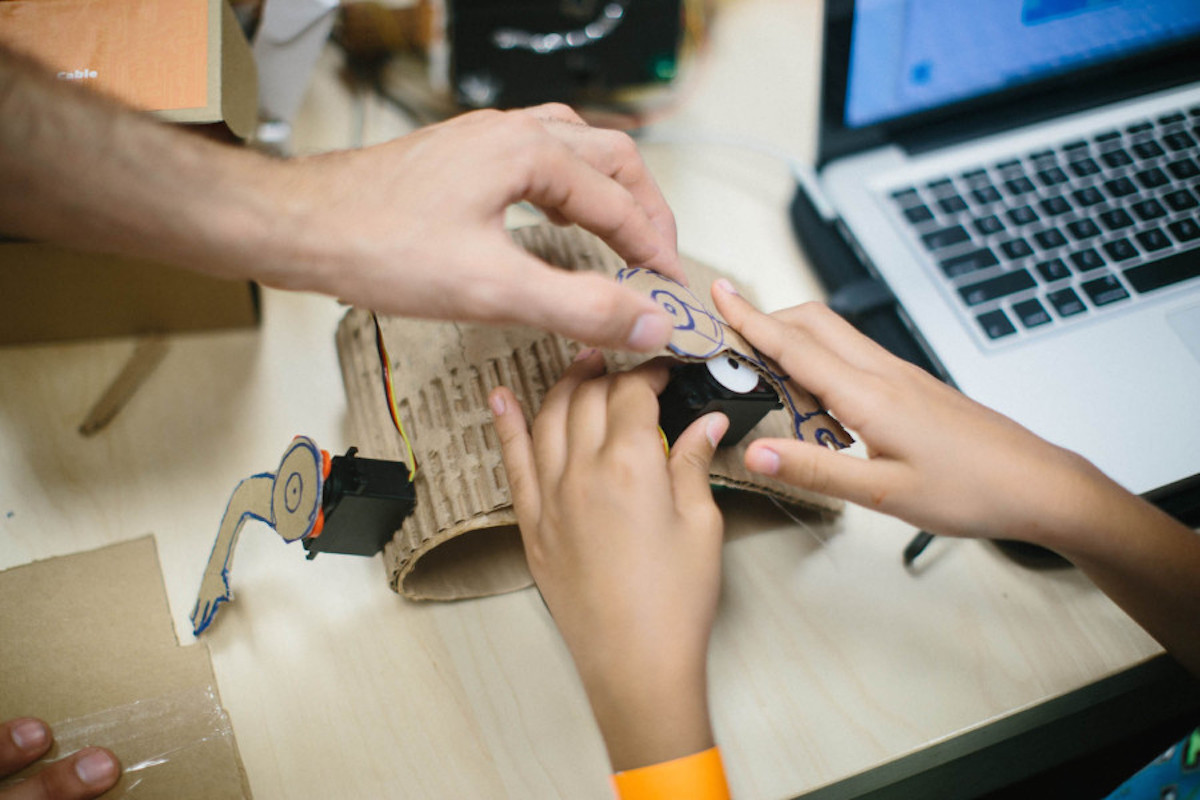
Parenting for Technology Futures: how to best prepare our kids
Illah Nourbakhsh was in high school when the first Texas Instruments scientific calculator came on the scene. The device, whose predecessor is now commonplace in math classes, was a huge boon to education—and it sparked a new debate on appropriate technology use in the classroom.
A few decades later, the implications of integrating digital technology into education are much broader. Whereas the calculator was simply an efficiency tool, digital technology today has the potential to positively transform social interactions and interdisciplinary learning. Meanwhile, concerns regarding digital privacy and appropriate digital technology use have grown.

In his book Robot Futures, Nourbakhsh acknowledged the inevitable rise of robotics, and he wrote that society has to act fast to harness the technology’s immense power and use it for social good. The professor of robotics and director of CREATE Lab at Carnegie Mellon University has just published a second book, Parenting for Technology Futures. In it, as he did in Robot Futures, Nourbakhsh recognizes the advent of digital education as certain and full of opportunities for new kinds of learning. But he advises parents to ask, “How do I give my child the best possible preparation for a post-human future powered by technology?”
Kids, the author warns, are at risk of becoming passive “techno-consumers.” Adults in their lives should “prepare our children so well that they influence the robot future.”
Technology’s rapid rise has created a rift between youth and their adult mentors, Nourbakhsh claims. “The gap has to close,” he says. “The only way our children will be competitive in a hyper-technical future is if parents and teachers work together with children, as a unified team, to create the best possible circumstances for learning and personal empowerment starting right at birth.”
Although Parenting for Technology Futures is aimed at parents, the book is a good primer for anyone interested in the best use of technology in both formal and informal education, or in the role adult mentors can play in young learners’ lives. Nourbakhsh reminds readers that children spend only 20 percent of their waking hours at school, so it’s crucial to explore opportunities for learning during nonschool hours.
“You cannot depend on school as a first introduction to the joy of learning and discovery,” he writes.
Throughout the book, Nourbakhsh cautions against blindly embracing what he calls “silo STEM.” Many schools are heavily propping up the STEM disciplines and consequently sacrificing fields that involve more communication and creativity, he explains. As a technologist himself, he does not discredit the value of STEM or ignore our dire shortage of students prepared for careers in the field. Instead, he criticizes the view that each STEM discipline is an autonomous entity most valuable when pursued to the exclusion of other fields.
“The inspiration to bring knowledge from multiple disciplines together to solve any problem confidently will always have value,” Nourbakhsh writes. “STEM has already morphed in many circles into STEAM—this is a healthy move because it incorporates Arts back into the family of core learning sensibilities, where it belongs.”
Nourbakhsh’s accessible book is packed with these kinds of thoughtful musings on the future of technology and learning as well as with online resources and practical suggestions for those in the thick of it. He praises the “gamification” of education and business, citing the immediate feedback, healthy competition and social interaction facilitated by games-based learning. He tells parents to let their kids take them on a “digital tour” of the devices and games they use. Kids will feel proud of their technological prowess, and adults will be brought out of the dark.
Having worked with a range of students himself, Nourbakhsh sympathizes with the adults who are simply overwhelmed by the range of digital tools on the market. When picking an educational product, “ignore the business hype and focus on the track record,” he advises. And be conscious of scale; what might be right for an individual at home might not work in the classroom.
Nourbakhsh’s CREATE Lab is a testament to the benefits of hands-on, collaborative digital learning. At CREATE Lab, kids and scientists alike are encouraged to use technology to further pursue their passions and to discover new areas of interest. The aim is to foster community-minded technologists. Whenever possible, the organization makes its creations available to local people and partners. Past projects include the BowGo, an expertly engineered pogo stick that jumps up to 4 feet in the air; Can Pals, a modernized tin-can telephone with which kids can record stories that others can listen and respond to; and Energize Haiti, which brought energy-monitoring software to a hospital and energy-generating equipment to a playground.
Nourbakhsh knows that technology is a powerful and often daunting force. In his books, he lays out clear steps kids and adults can take together to become agents, not victims, of change. When employed wisely, digital tools can be extraordinary catalysts for collaboration and creative growth.
This article originally appeared in Remake Learning, one of Kidsburgh’s community partners. Remake Learning reports on the people, organizations and ideas shaping the future of teaching and learning in the greater Pittsburgh region.
Featured photo: Hive Learning Party, Photo courtesy of Remake Learning